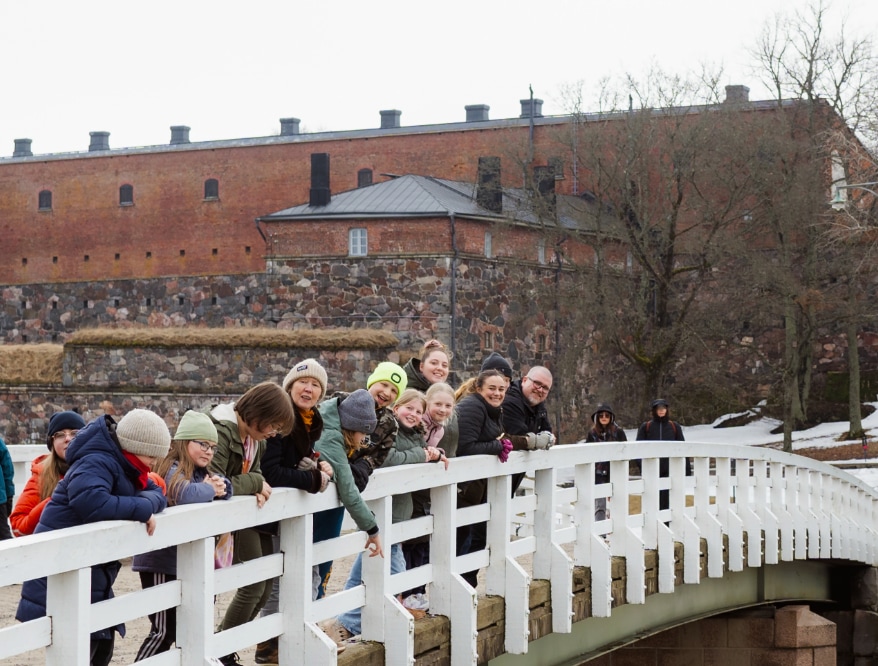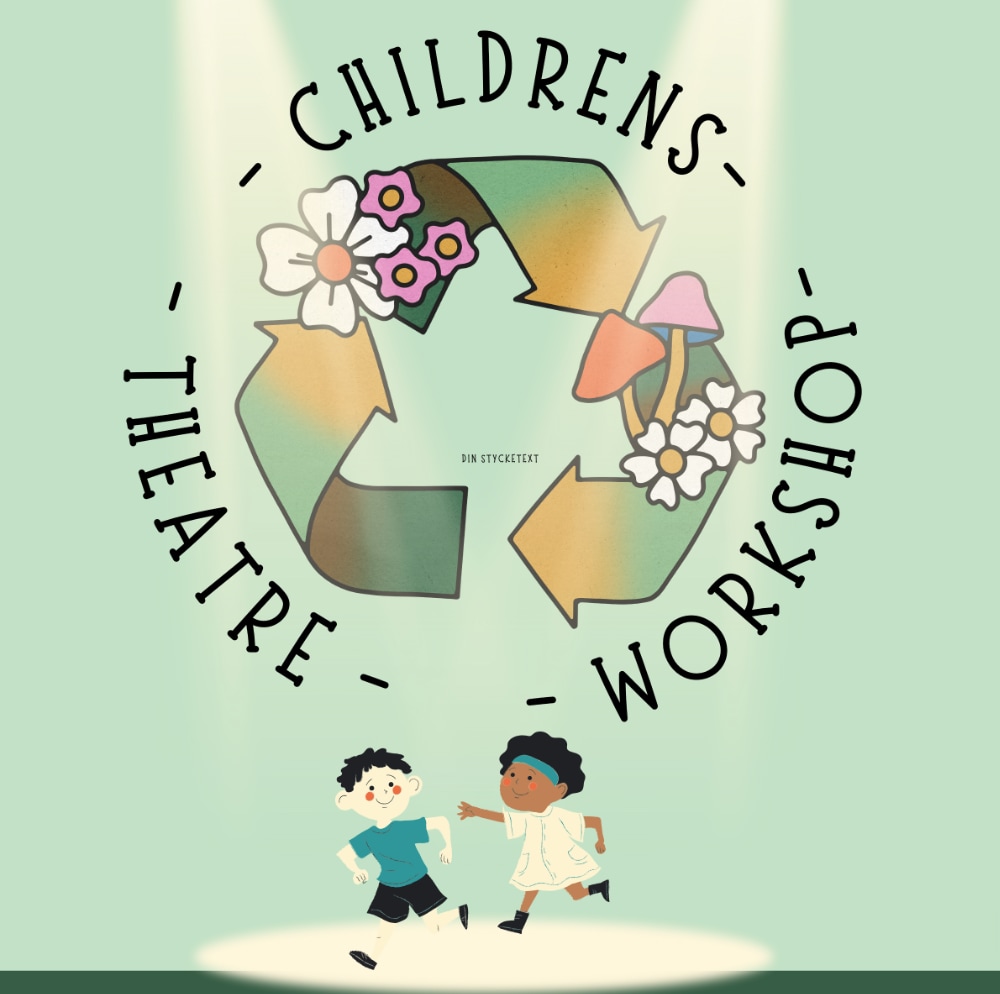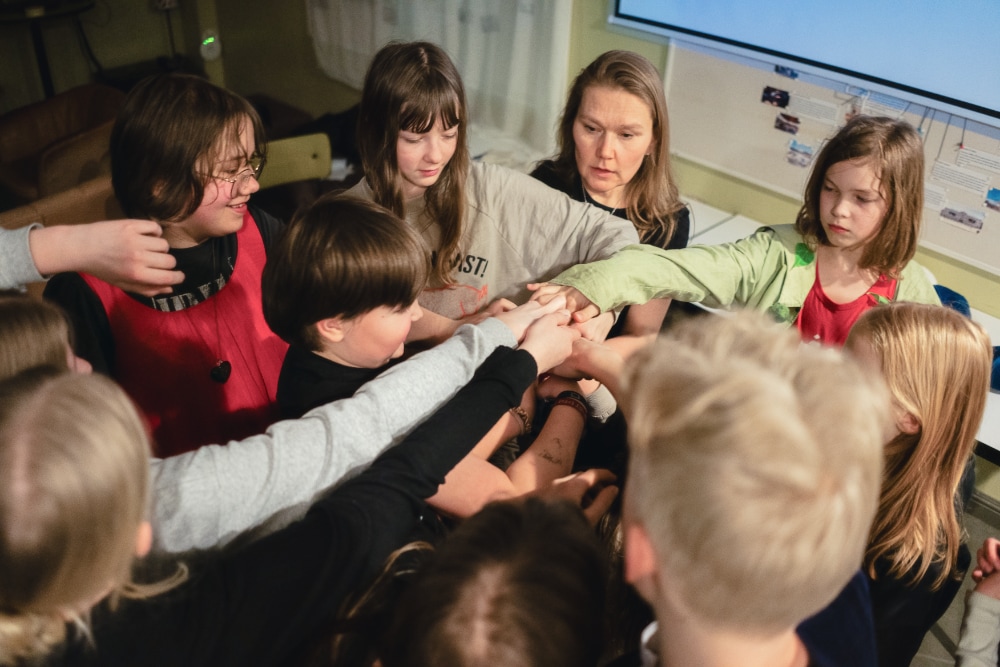The Finnish centre of AITA/IATA in collaboration with NEATA, organized an international Green Theater workshop in Suomenlinna, Finland from March 22-24 2024, for children. The workshop addressed themes of ecology and green theater in a diverse, experiential, and interactive manner using various theatrical methods. Participants were encouraged to consider how theater can be created in accordance with the principles of sustainable development.
The workshop program was divided into three days, during which participants learned about theater-making together across language barriers, using games and theatrical techniques to explore the chosen topic. The participants’ own interests, ideas, and thoughts were taken into account in the workshop content and in the performance created during the camp. The participating children came from Latvia, Lithuania, Denmark, and Finland.
The workshop utilized a wide range of improvisation techniques and exercises, such as statue work, movement expression, soundscapes, and improvised scenes. Methods used included mind mapping, story and poetry work, photography, character building, and scene rehearsal. Children also considered more ecologically sustainable solutions through props, set design, and costumes. Additionally, discussions arose about internationalism and how ecological theater could be implemented on a larger scale between different theaters. The workshop was led by Teatteri Ilmiö from Finland.
NEATA Children’s Theatre workshop on sustainable theatre – Ideas from the participants:
● Utilizing recycled materials in props, sets, and costumes. There is no need to always buy new; something already you already have can get a new life.
● There doesn’t need to be a lot of material and stuff in the performance: less is more.
● Thrift stores and second-hand shops are good ways to acquire props instead of buying new.
● Attitude is crucial: the desire to prioritize sustainability in all actions.
● Why don’t theatres have real plants on stage? There should be more of them instead of plastic ones.
● A lot can be achieved with image projections without needing to acquire materials. The same goes for other visual methods, like painting.
● People come to the theatre by car. The audience could use public transport, walk, or cycle more—or carpool if they must use a car. Could the theatres support the audience in making smarter decisions?
● Could theatres perform in nature or come to the audience, thus reducing the audience’s environmental impact?
● Items could also be donated to theatres as materials.
● Offer plant-based, ecologically produced food in theatres.
● Could there be a website between cities, local areas (or perhaps different countries), through which theatres could announce their prop needs and other theatres could lend items for each other’s performances? For example: one theatre has 20 red clown noses, and another theatre needs them. Instead of the latter buying 20 clown noses, they could borrow them. The same goes for technology and everything else.
● To visit theatres in different countries are inspiring: on a larger scale, it would be great if people didn’t have to fly to see theatre in another country, but instead enabled more land-based ways to travel internationally.
The workshop was arranged by The Finnish centre of AITA/IATA in collaboration with NEATA and with the support from the
Ministry of Education and Culture, Svenska Kulturfonden, Emelie & Rudolf Gesellius fond and William Thurings Stiftelse



Comments are closed, but trackbacks and pingbacks are open.